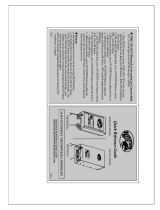
Leviton Lighting & Energy Solutions
Page iv
3.6.5.7. Parameters ....................................................................................33
Sensor Type ..............................................................................33
Sensor Location .........................................................................33
Range Control ............................................................................33
IR Mode ....................................................................................33
LED ...........................................................................................33
Weighting ..................................................................................33
3.6.6. Switch Configuration ...................................................................................34
3.6.6.1. Device Type ..................................................................................34
3.6.6.2. Status ...........................................................................................34
3.6.6.3. Device Name .................................................................................34
3.6.6.4. Short Address ................................................................................34
3.6.6.5. Version Number .............................................................................35
3.6.6.6. Product Line ..................................................................................35
3.6.6.7. Parameters ....................................................................................35
IR Mode ....................................................................................35
Buttons .....................................................................................35
3.6.7. Relay Configuration .....................................................................................35
3.6.8. Low Voltage Interface Configuration .............................................................35
3.6.9. Occupancy Sensor and Photocell Interface Configuration ...............................35
3.7. Personal Dimmer .......................................................................................36
4. Sector System Devices.................................................................... 37
4.1. Network Specifications ...............................................................................37
4.2. Bus Controller ............................................................................................37
4.2.1. Addressing .................................................................................................37
4.2.2. Reset .........................................................................................................37
4.2.3. Test Mode (Locating Devices) ......................................................................37
4.2.4. Network Termination ...................................................................................38
4.2.5. LED Status .................................................................................................38
4.2.5.1. Red ...............................................................................................38
4.2.5.2. Yellow ...........................................................................................38
4.2.5.3. Green ............................................................................................38
4.3. Ballasts ....................................................................................................39
4.3.1. Smart Ballasts .............................................................................................39
4.3.2. Addressing .................................................................................................39
4.3.3. 0-10V Ballasts .............................................................................................39
4.4. Occupancy Sensors ....................................................................................40
4.4.1. Passive Infrared (PIR) .................................................................................40
4.4.2. Multi Technology (Ultrasonic / PIR) ..............................................................40
4.4.3. Addressing .................................................................................................40
4.4.4. LED Status .................................................................................................40
4.4.4.1. Red ...............................................................................................40
4.4.4.2. Yellow ...........................................................................................40
4.4.4.3. Green ............................................................................................40
4.4.5. Controls .....................................................................................................41
4.4.5.1. Knob Settings ................................................................................41
4.4.5.2. Dip Switch Settings ........................................................................41





















